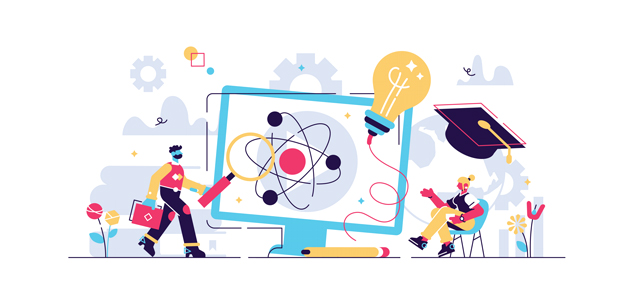
What did 2020 mean for edtech?
This year has seen the biggest increase in reliance and need for connected education technology within the education sector in the past decade, and so we spoke to Rahim Hirji, UK Country Manager of leading online learning platform and app, Quizlet, who reflects on the past year in education and looks forward to 2021 to offer expert insight into the future of the education sector.
-
What did we get wrong about edtech in 2020?
“Nobody could have predicted the sudden and expansive rise in adoption of edtech in 2020. Looking back at previous years, we’ve been taking baby steps and now, we’re moving at a running pace.
Edtech has become a staple within the schooling system and is a central component to education. One thing that I believe education didn’t see coming was the simplicity of synchronous learning through tools like Zoom, Microsoft Teams and Google Meet. Overnight, teachers came together and, as they are so used to doing, made the best of the tools they had. The unintended downside of rapid technological adoption was the exacerbation of the gap between the ‘haves’ and the ‘have nots’. Going forward, that will be met by the government, in some countries, but where whole classes haven’t got access to high-speed Internet, unfortunately, the divide has and will become greater.
-
How will the pandemic change education in the long term? And what specifically is the future of online learning?
“COVID has given us an opportunity to rethink education's dysfunctional relationship with technology. In the past, educational technologists would have to cajole colleagues or headteachers to try and use specific tools in the classroom. Whilst the tables have not completely turned, edtech is now a long rising tide and we will start to see a mass adoption for a more specific purpose among schools and universities.
It is true that we will undoubtedly see some ubiquity to technology in education going forward. However, we will also start to see teachers and students becoming particularly discerning with the tools they choose to support their learning. By this I mean we will see some products winning out over the coming years and others sadly falling by the wayside. As to be expected, online learning tools that are easy-to-access and intuitive-to-use are gaining traction the quickest. Students are seeking the tools that help them learn both in and out of class time, and teachers are looking for tools that provide flexibility in terms of the subjects they can teach, as well as the variety of learning activities they can support. Tools that both broaden learning interactions as well as provide flexibility in learning will win out in the long term.
Online learning is here to stay, whether fully integrated within an educational model or in isolation. We have seen whole online curriculums launch within months and high-quality education has become available at the click of a button or the swipe of a finger.”
-
In what ways will teachers, schools and ed-tech companies converge over the course of 2021 and what will be implemented to enable this network to work together?
“Over the course of this last year, education has transcended all walks of life and has seen the coming together of many parties who have the shared goal of keeping students atop their education (which has been particularly refreshing). It is likely that we see continued efforts in this area with heavy backing from the government. Specifically, I see partnerships between content and technology companies, therefore fast tracking support for all types of schools, as well as vulnerable students, building new resources specifically created for self-directed student learning, and creating core resources for teachers to “remix” their own classes, both online and offline.”
-
Given the disruption of exams, coursework and physical testing, how will students' success and aptitude be measured and change through the medium of digital solutions?
“Learning should not be bound to the classroom. I envisage a point in the near future where monitoring of learning and intervention happens on multiple levels, with the modes of learning moulded and adapted to each individual learner through the implementation of machine learning and artificial intelligence within education technology. This could mean utilising tools that eventually track student learning and can identify where individuals are struggling most, as well as allowing for a better understanding of student engagement and comprehension throughout the school year. Technology in the near future could help us to make accurate estimates on how a student might perform when compared to a “norm” group based on their past performance, their preferred learning style and the level of effort which will back up small achievement-based tests over the course of their learning journey. Most importantly, technology could help give students the credit they deserve for their individual learning successes that aren’t always captured in today’s system.
-
Is the future of schooling a hybrid between physical and online learning, if so, why is this important for learning and teaching? What is the future of edtech?
“The future of education lies in blended learning, taking the best of what technology can offer, including areas like smart grading and personalised learning paths, and identifying how to support teachers in delivery. The concept of blended learning is not new and not a wholescale new prediction, but the pandemic has escalated its adoption. There is a prosperous future that exists for both in-person and online learning as we move away from a ‘one size fits all’ mindset and build a solution through hybrid learning. This is where we are headed for 2021, where we will see increased and escalating use of smart and connected technology both in the classroom and by students themselves.
Over the next decade, we will see edtech become a bona fide and essential part of the education landscape with continued growth. Edtech will be synonymous with high-quality education.”

